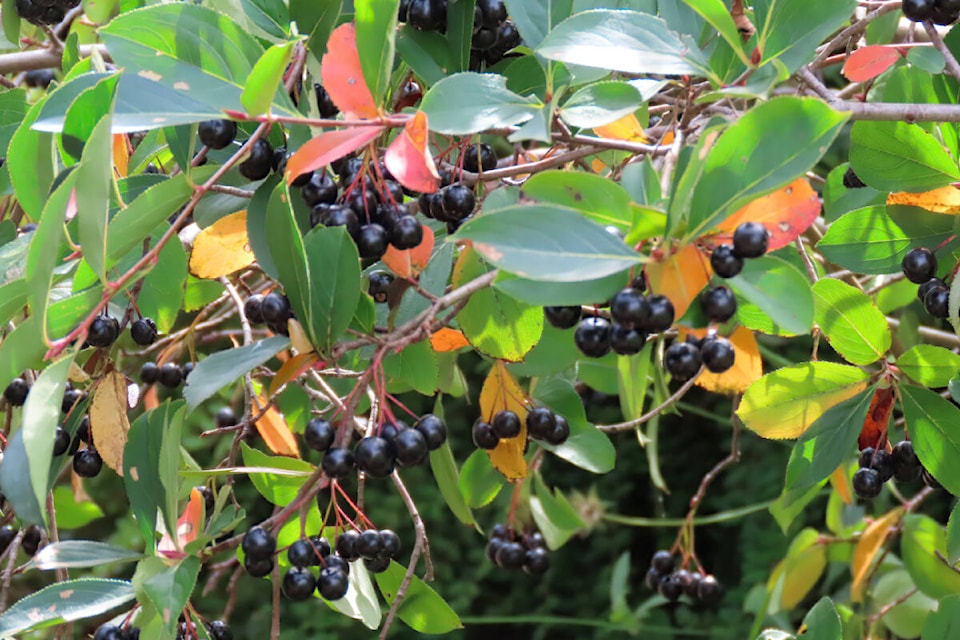By Leslie Cox
Special to the Record
Who is drowning in zucchini?
Too bad you missed the National Day of Sneaking Some Zucchini onto Your Neighbour’s Porch Day on Aug. 8.
Personally, I do not mind an abundance of zucchini as there are so many ways you can use it. Know that book by Vicki Lansky, Baking Soda: Over 500 Fabulous, Fun, and Frugal Uses You’ve Probably Never Thought Of? Well, I bet if gardeners put their heads together, we could probably come up with at least 50 recipes that use zucchini… maybe even 100.
I have more than 25 recipes myself, including one for zucchini pizza crust, two marmalades and a relish. Have had to be creative since John typically insists on putting in as many as nine zucchini plants. One year I did get him down to just seven. Good thing zucchini freezes well! Means I can keep John happy with zucchini chocolate cake through the winter.
The tomatoes are also coming on fast and furious, especially when we are talking about 36 tomato plants in the greenhouse. Good thing I also have quite a repertoire of recipes for this wonderful vegetable.
Wait a minute! Botanically speaking, the tomato is actually a fruit, not a vegetable. In fact, to be more specific, the tomato is technically a berry according to various dictionaries and one gardening encyclopedia that I checked. (Just to be confusing, my Wyman’s Gardening Encyclopedia, 1986 Edition, defines the tomato as a vegetable but then calls it a fruit under the Types and Varieties heading.)
The issue of which classification would be the correct one for the tomato was actually settled in the Supreme Court of the United States in the mid-1880s. John Nix had founded the John Nix & Co. fruit commission and was transporting tomatoes and other fruits from parts of the U.S. and Bermuda to New York.
However, after President Arthur signed the Tariff Act in 1883, Nix was charged tariff fees on tomatoes as they were listed as “vegetable” in the Tariff Act. Under Justice Horace Gray, the court unanimously proclaimed the tomato, based on the way it is used, be classified as a vegetable under the customs regulations.
It was this court case which gave the nod that New Jersey could claim the tomato as their state vegetable in 2005.
Speaking of berries, I am a little astonished how many of my acquaintances do not know about aronia berries. Maybe you know them by their common name of chokeberry. (Not to be confused with chokecherry.) Honestly, Aronia melanocarpa, black chokeberry, are one of the top superfoods.
According to the USDA Database, aronia berries are 117 per cent higher in flavonols than blueberries. They are also 406 per cent higher in anthocyanins and 344 per cent higher in total antioxidants.
It was especially interesting to note aronia berries tested 429 per cent higher than blueberries in proanthocyanidin. This is quite a powerful antioxidant that helps to reduce the risk of certain types of cancers and has anti-inflammatory benefits.
According to a publication on the National Institute of Health website dated November 2022, studies are ongoing to determine the potential benefits of aronia berries to human health. Not only are scientists looking further at the antioxidant and antitumour benefits, but they are also looking at the possible anti-infection benefits.
While studies are still being conducted on mice, it was interesting to read their early positive findings with regards to influenza, E. coli, streptococcus, inflammatory bowel disease, cancer tumours and various coronaviruses… including the one that caused COVID-19. They are also studying aronia berries for potential antidiabetic properties.
You bet they are a superfood! You just have to get past their tart, pucker-power flavour but man, they sure make a darn fine jelly.
Leslie Cox co-owns Growing Concern Cottage Garden in Black Creek.



